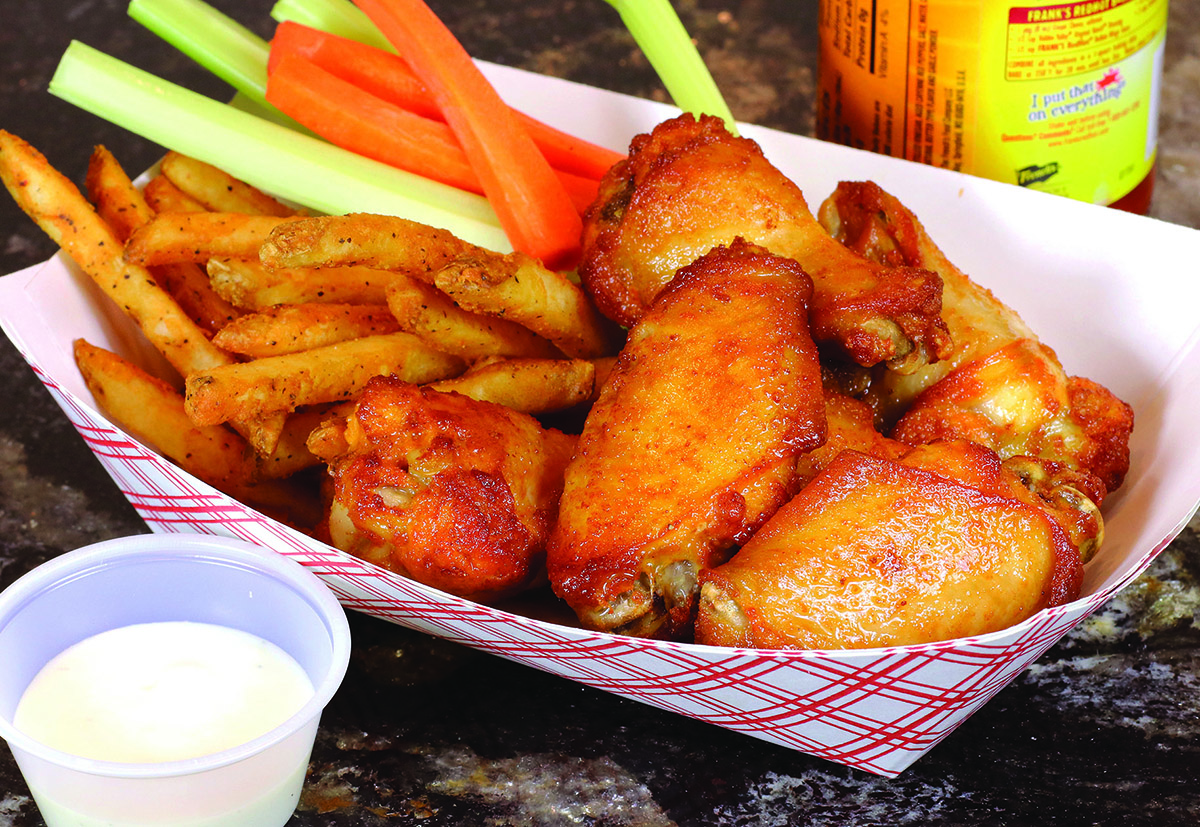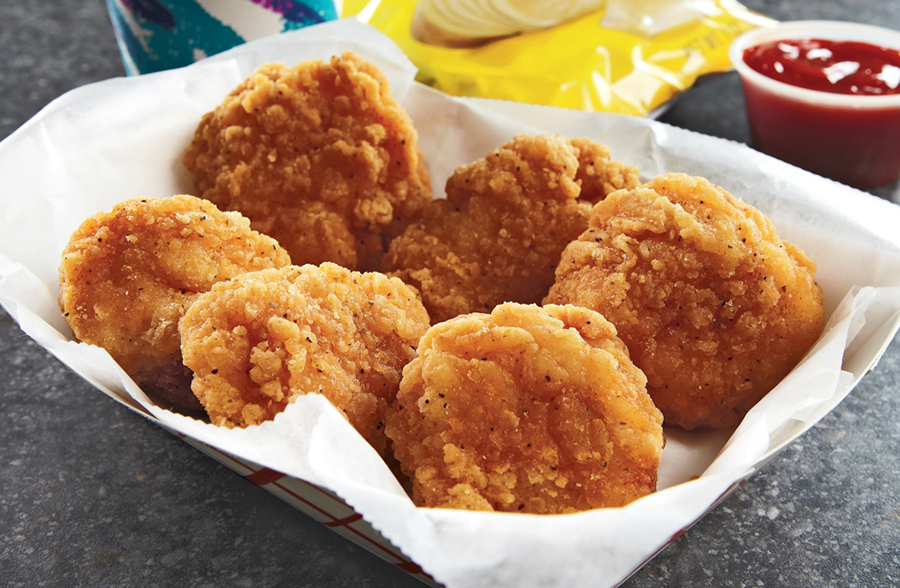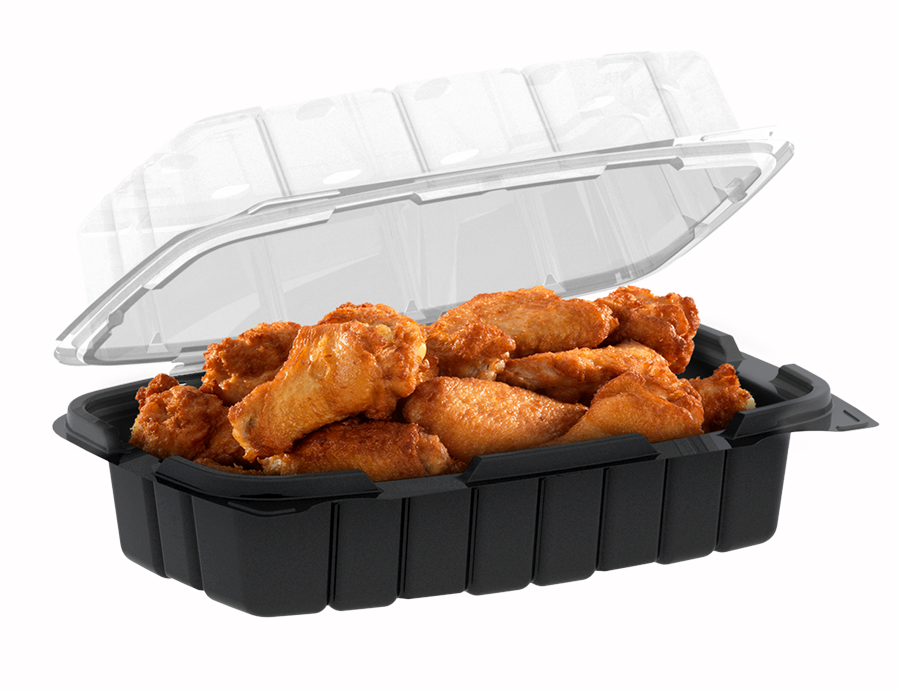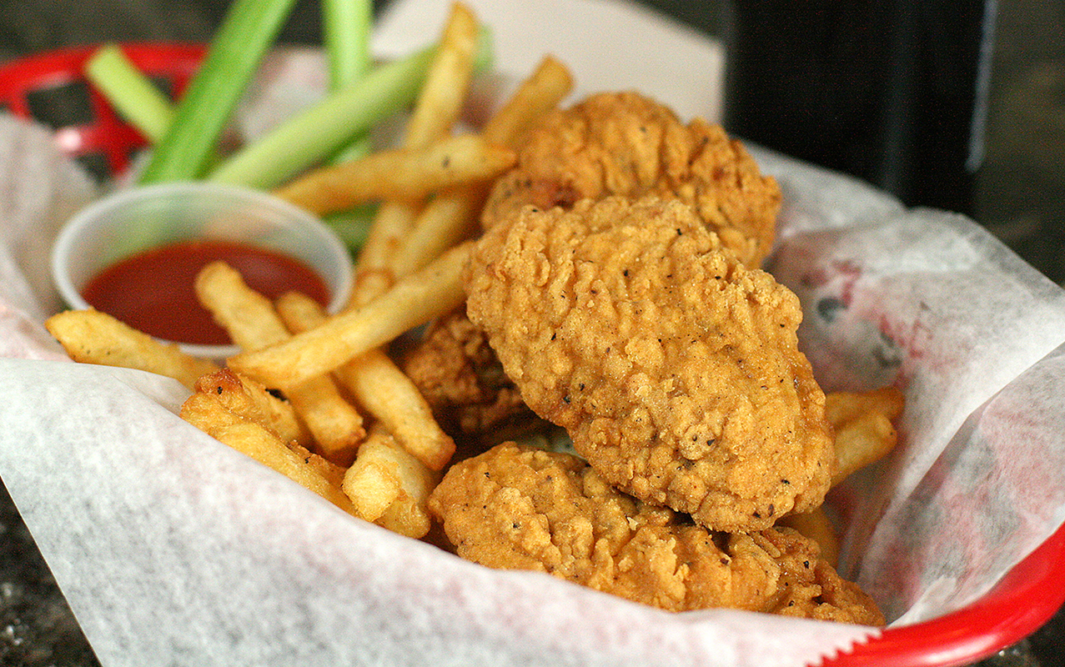Fried chicken programs offer the instore deli an appetizing way to combine convenience and value.
The origin root of fried chicken may be hotly debated but no one doubts its global dominance as annual consumption continues to trend upward, past 90 pounds per capita. Ways to consume the crispy, delicious version of the most consumed protein are many. In the U.S., choices might consist of Southern fried, Nashville hot or buffalo chicken. Global fried chicken influences include Ayam Goreng (Indonesia), Yangnyeom chicken (Korea), Karaage (Japan), Chicken Yassa (Africa) and Gai Tod (Thailand), just to name a few.
Continuing popularity
Rotisserie chicken retains the bulk of the category with fried chicken only making up around one-third of retail chicken programs. But those who do fried chicken do it well, said Jonna Parker, principal of IRI Fresh Foods, Chicago.
Although more expensive than last year, fried chicken when done right is a high-loyalty product, one that is still cheaper than a restaurant purchase outside the store. And as consumers gain mobility and gather together in-person more, fried chicken offers consumers a convenient option that can be easily paired with a range of deli sides to make a complete meal. The traditional eight- or nine-piece bone-in chicken is perfect for carryout or off-premises dining, a behavior many consumers adopted during the pandemic.
“You don’t have to change prices; all prices have gone up,” Parker continued. “Instead, drive foot traffic and emphasize how many ways consumers can feed their family every day by meeting their needs in the deli – a win-win strategy. This is better than discounting individual items and it’s a great opportunity for delis anchored around the meat counter.”
Seek to differentiate
Additional flavor options, such as spicy, have helped keep sales of bone-in fried chicken afloat, observed Broaster Company, Beloit, Wis. Wings also continue to be extremely popular, although high pricing has somewhat temporarily depressed consumption. For some operators, bone-in thighs are proving to be a satisfactory substitute for the more-expensive wings.
Brakebush Brothers, Westfield, Wis., offers a full line of chicken products in a variety of flavor profiles and breadings/coatings. That includes ready-to-cook IQF fillets, tenders and chunks, tenderloins, fillets and boneless wings, grilled and breaded fillets, cutlets, strips, patties and nuggets.
 Brakebush Buffalo wings
Brakebush Buffalo wings “Demand for chicken is on the rise in all segments of our business and deli is no exception,” said Denise Orth, marketing manager, Brakebush Brothers, Inc. “We’ve seen success with fully cooked breaded tenderloins, roasted or breaded wings and breaded boneless wings.”
 Brakebush boneless wings
Brakebush boneless wings
Because retailer chicken programs typically look very similar, Parker suggested retailers could benefit from taking a cue from the popularity of local chicken restaurants. Seasonality and LTO can be great ways to drive traffic and help a retailer break out of a set-it-and-forget-it pattern.
As witnessed by the proliferation of chicken-based restaurants around the U.S., instore is also seeing the popularity of boneless fried chicken continue to soar, led by sandwiches, supported by a solid foundation of tenders and whole-muscle snackables such as popcorn and nuggets, according to Greg West, senior vice president of marketing and food innovations, Broaster Company.
Fryer tactics
The ability to offer high-quality chicken with consistency keeps consumers coming back for more. Broaster recommends pressure frying to produce juicy, flavorful and moist chicken as compared to open frying. Pressure fryers save operators 25% more time than their deep-fryer counterparts. This year, Broaster will introduce a new, innovative pressure fryer, the E-Series 24G, to the grocery/deli segment for high-volume applications. The simple-and-easy-to-use pressure fryer extends fry oil life and offers increased energy efficiency with its gas models.
Producing a quality bird includes observing key considerations in regard to selecting frying oils for specific flavor goals, desired nutritional profile, supply chain availability, ease of implementation, consumer perception, fryer management and total cost, including oil fry life and associated labor costs.
Premium fry oils, such as high oleic sunflower oil and high oleic canola oil, offer greater oxidative stability for a longer fry life as compared to commodity oils, according to Stacy Borders, technical services manager – food service, Cargill, Minneapolis. Such oils extend the optimum frying range, delivering food at its best appearance and flavor longer, increasing consistency, ensuring repeat business and an improved bottom line. In contrast, commodity oils can break down more quickly, which creates off flavors and darkening food.
The use of high-quality oil can also save time and reduce labor costs, increasing the average days of oil use. However, good fry oil management practices are important to optimize frying oil and influence its life and performance, she continued.
Other considerations revolve around flavor and nutritional profiles. Different oils impart different flavors. Canola oil has a clean, neutral flavor profile; sunflower oil has a mild nutty flavor; corn oil has sweet hints, and soybean oil has a beany or buttery flavor. Nutritionally, canola oil has the lowest saturated fat content and is high in monounsaturated fats
Make it stick
Achieving optimum adhesion of breadings and batters is one of the product’s big challenges, especially in high-moisture meat applications, according to Melissa Machen, senior technical services specialist, Cargill. The right modified starch system can help coatings stick, preventing pillowy pockets and blow-outs.
That’s why corn dextrins, known for their ability to enhance crispiness, are another staple in the breading-and-batter toolbox. Corn dextrins can be added to create a protective film layer around the product, reducing oil pick up and preventing oil from seeping into the breading. Fried products that absorb too much oil become soggy and unappealing. Likewise, oil temperature plays a big role in oil absorption – the right temperature can help prevent excess oil absorption.
Researchers at Cargill have done extensive work to understand adhesion, resulting in modified starches that provide different adhesive and clear coating functionalities and yield high crispiness and optimal structural integrity. These starches help batters stick to the substrate and assist with the adhesion of other coating systems like breading, enabling brands to deliver the crispy, crunchy texture consumers desire.
Ultimately, finding the best breading-and-batter solution will vary based on the system. How it will be battered and breaded (tempura batter vs. doubled-coated) will guide what ingredients are included to aid with adhesion and prevent blow-off.
“One of the big trends in the breading and batter space is the move to incorporate plant proteins in these systems,” Machen said. “Plant proteins add crunch and integrity to the batter, helping brands create the sensory experiences consumers are looking for. Soy flour is a common choice, but we’re also seeing more customers experiment with other plant proteins, including pea protein, which really adds to the batter integrity.”
Ancient grains are another recent addition to some batters. Options like quinoa or barley provide unique textures that differentiate a product from others in the marketplace, while also enabling brands to leverage the label appeal of these trendy ancient grains.
Easy transport
Fried chicken is synonymous with easy, convenient eating, but it’s important not to pigeonhole it into a meal that’s just for the summer months. Instead, Parker recommends taking a cue from the marketing of charcuterie trays and promote fried chicken throughout the year. The portable favorite is perfect for a picnic, game nights, family reunions, tailgates, year-round social gatherings – the potential is endless.
“Another way to differentiate is to consider regionality and shifts in population,” she continued. “Regionality can help differentiate and make store offerings look different. Think about people traveling for road trips or to stock their Airbnb. Look for ways to bring in new trends like the local restaurants do and be aware of the regional favorites people bring with them to a new location.”
Easy transport is increasingly important as consumers choose to eat their prepared foods off-premises, according to Kurt Richars, Anchor Packaging, Ballwin, Mo. The company’s Crisp Food Technologies® packaging protects the texture of fried chicken and keeps it hot and crispy for hours. Its rigid containers work seamlessly with operations to offer superior merchandising and prevent messy leaks that could ruin the consumer experience or create slip-fall risks instore, he continued.
Packaging also helps tap into growing consumer demand for more sustainable options. Anchor Packaging designs offset food waste by providing extended shelf life, a superior meal experience and an appealing shelf presentation that sells items faster. And tamper-resistant designs demonstrate how retailers are prioritizing safety and hygiene.
 Anchor Packaging
Anchor Packaging
“Today, it is critical that packaging is viewed as a way to increase sales and profits and not merely as a cost,” Richars concluded. “Industry leaders recognize that in addition to improved merchandising, the right package drives sales by improving the customer experience and providing confidence in the safety and security of their food. Make your packaging decisions based on the total return a package can generate and not just the item’s cost.”

